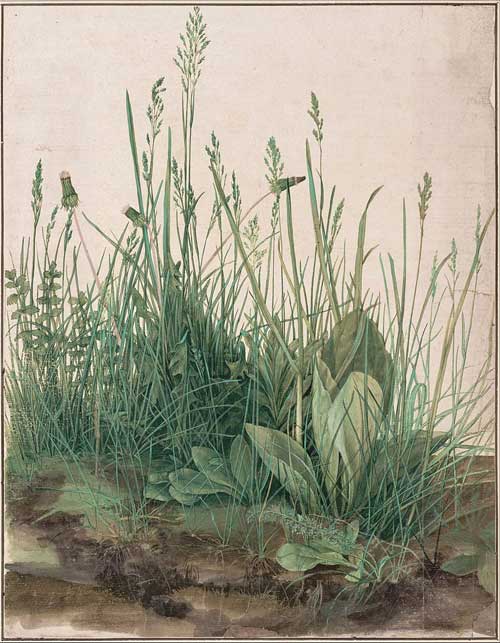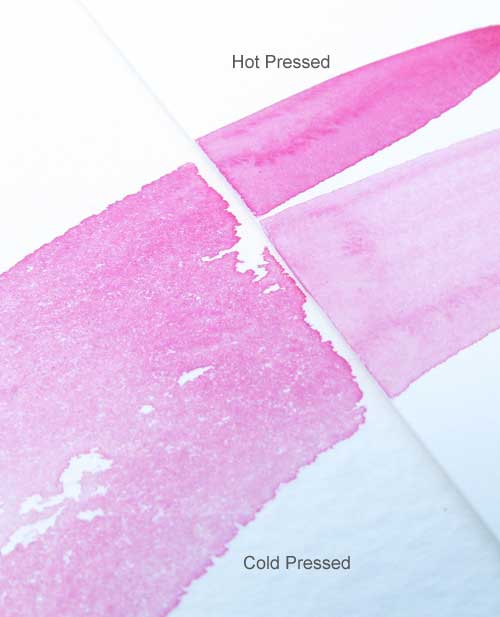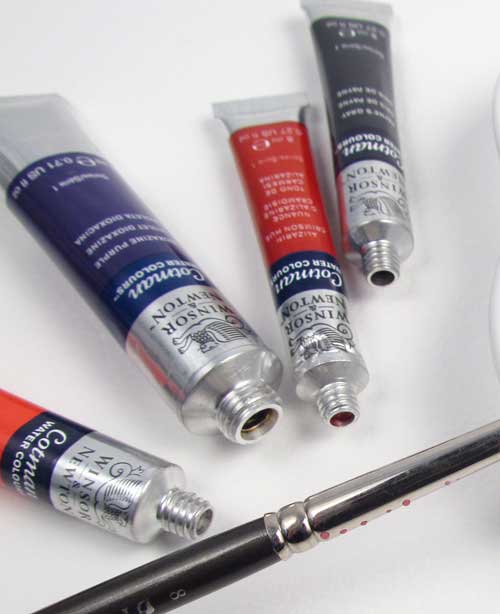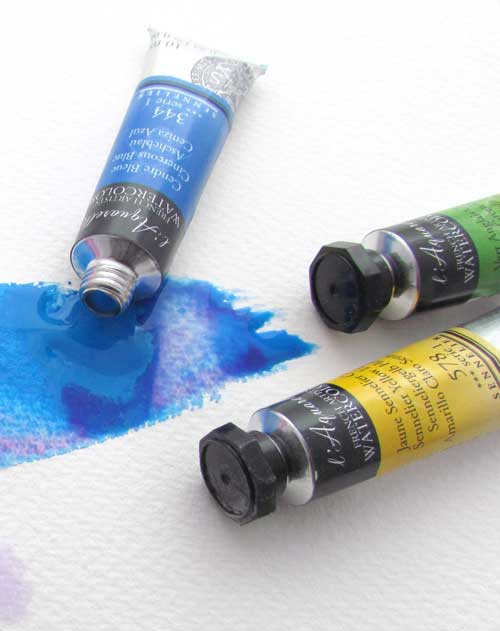Introduction to Watercolour Painting

'The Monumental Turf' by Albrecht Durer
Watercolour, or aquarelle, consists of pigment bound in gum from the Acacia tree. The name, Gum Arabic, is usually used to describe any Acacia Gum but the best watercolour paints are made from just the one type – Gum Kardofan – which is named after the area in Africa where the particular trees that are used grow.
The most appealing characteristic of watercolour is its transparency which allows for a freshness and luminosity. The pigment is applied in a series of transparent washes that allows light to be reflected from the surface of the paper through layers of colour. The layered washes increase in density and transform colour already laid down. This classic watercolour technique was perfected in England during the eighteenth and nineteenth centuries.
As well as washes, there are various other techniques that can be mastered. A wash can start with an application of strong pigment that is then thinned out with water to create a graduated effect. Another technique is to wet the paper before the paint is applied so that when the paint is ‘dropped in’, it bleeds out or mixes interestingly with other washes. The paint can also be applied with very little water over a rough surface to create a grainy effect similar to the effect obtained with crayon.

Watercolour Paper plays an important role in watercolour painting. The type of paper used will behave differently with the amount of water present in a wash and so affect the colour that is laid down. It will also affect the way the pigment gathers which can simply add interest or define a form. Most of all it is the whiteness of the paper that gives watercolour its glow as it shines through pale washes or makes for strong highlights when left exposed. The areas ‘left out’ are just as vital to the finished piece as the areas of painting.
Watercolour is a very unpredictable medium and can be frustratingly difficult to control. But it is this unpredictability that can make it a very enjoyable and satisfying medium to master. Even the most accomplished watercolourist may get some unexpected results but it is knowing how to take advantage of the way the paint has flowed and being spontaneous enough to ‘run with it’ and improvise a little that makes a good watercolour artist.
Finding out what marks can be made with different brushes loaded with different amounts of paint in various consistencies is a good place to start. Large flat brushes can be used for laying down washes, round brushes for filling more detailed areas and riggers for adding fine details. If a rigger is loaded with only slightly thinned paint and applied to a dry area, the colour will remain strong and stand out from the page whereas a wash of highly thinned pigment brushed onto a wet page will only subtly ‘stain’ the paper. Using a range of mark-making and washes correctly will result in not just capturing a scene but giving real depth to it as well.
If you do make a mistake that cannot be utilised, it is sometimes possible to ‘lift’ the paint by adding clean water and laying down a clean piece of kitchen towel to soak up the water, colour and all.

The paint comes in two forms – tubes and pans or, more commonly, half-pans. The tubes contain a thick ‘paste’ whilst the pans consist of a dried cake of the pigment, gum and additives. The tubes are seen as being more useful when working on larger pieces where larger quantities of paint are required whereas the pans come into their own when out in the field, sketching. With pans, some colours are harder to work up into the correct balance of water and colour in order to achieve a strongly coloured flow that is easy to pick up with the brush and move smoothly over the paper but generally, the better quality of paint, the easier they are to use. Try not to scrub at pans as this simply damages the brush.

Cotman is a student range
As with all media, there are Artists’ ranges and Students’ ranges with the price of the Artists’ split into ‘Series’reflecting the price of the pigment that the colour is made from and the Students’ colours set at one low price across the colour range. The low price does mean, however, that some colours are simply not available in the student range as they can not be produced for the price.

Sennelier Aquarelle is an Artist's quality range
Artists’ watercolours will be stronger in colour, purer, more lightfast and brighter than the Student Watercolour. It is remarkable how few colours are required to paint. From just 6, a very good range of colours can be mixed. These are Ultramarine, Cerulean Blue, Cadmium Red, Alizarin Crimson, Cadmium Yellow Pale and Lemon yellow. A few others such as Light Red, Raw Sienna, Burnt Sienna, Burnt Umber, Payne’s Gray, Cobalt blue and Winsor blue give earth tones that are very useful for deepening colour or painting shade.
White should not be mixed with the colours as this will turn the paint opaque and lose the translucency that defines watercolour but can be used to add in highlights after the washes have dried. White Gouache is also commonly used for this purpose.
Watercolour Sets can be purchased in metal or plastic boxes that will have an inbuilt palette and, occasionally, a water container and/or brush. These sets are good way to get a basic range of colours initially and then replacements and additional colours can be added to the set later.
With palettes , the only stipulation is that they are white so that the colour can be seen. I might add that in my personal experience, porcelain is the easiest to clean!
Many tutors and books will suggest a basic range of brushes to start with such as a 1 inch Flat, sizes 12, 6 & 2 in Rounds and a No. 0 Rigger. However, as brush sizing is not standardised across different manufacturers, these are just guidelines and a good starter set of brushes will usually provide enough sizes to explore the basic watercolour techniques.
